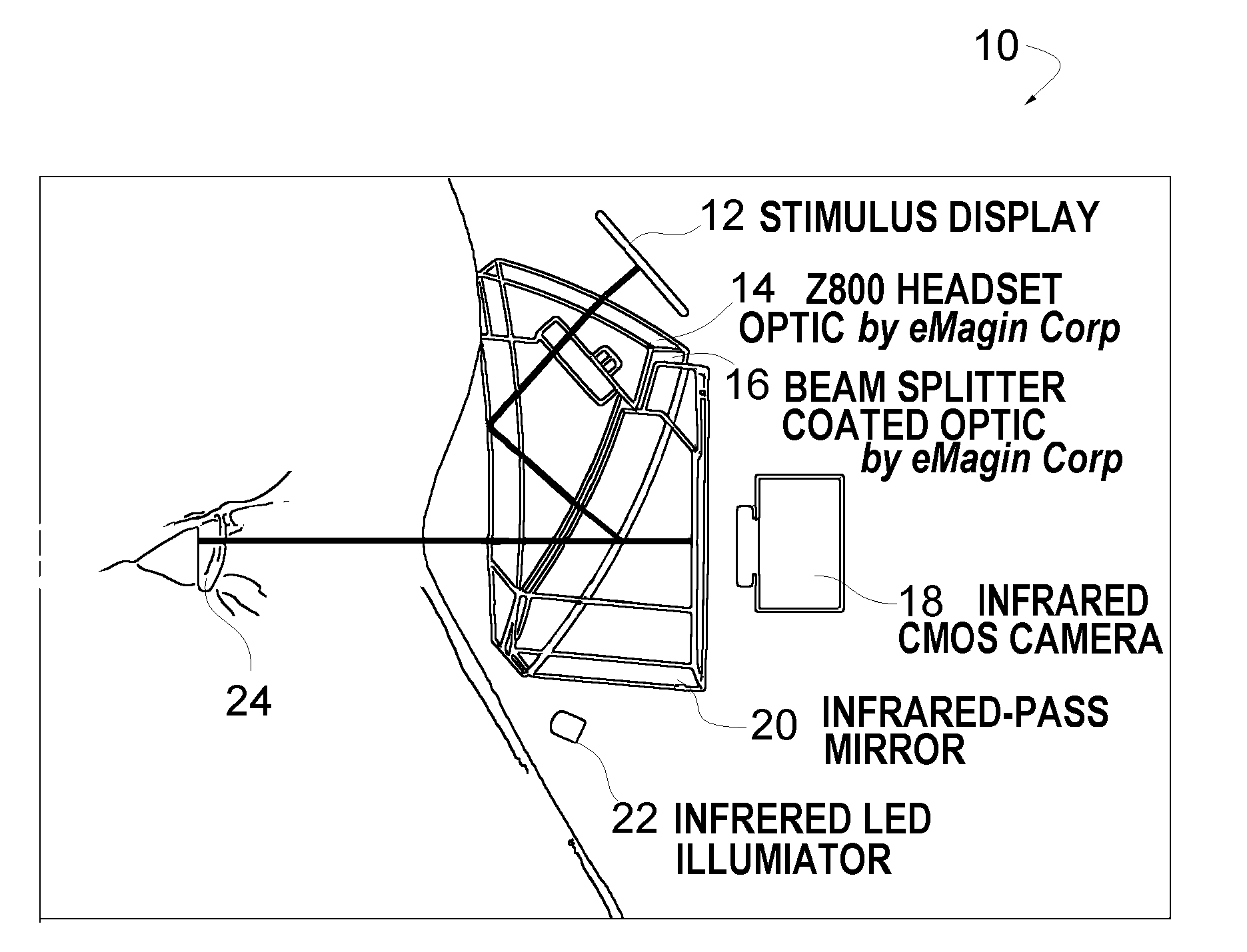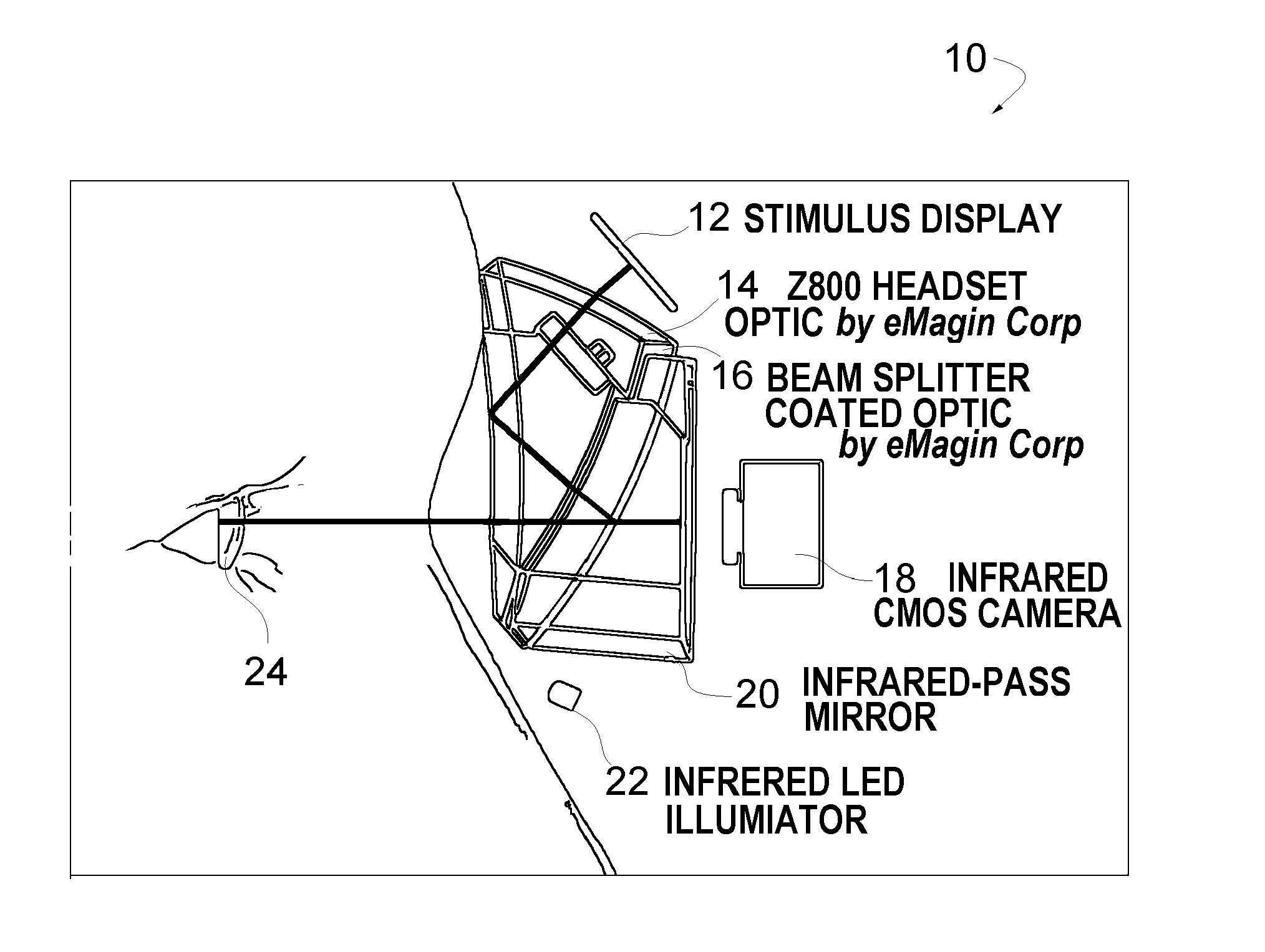Quantitative, non-invasive, clinical diagnosis of traumatic brain injury using simulated distance visual stimulus device for neurologic testing
a visual stimulus and traumatic brain injury technology, applied in the field of traumatic brain injury, can solve the problems of ineffective use of such devices, affecting the safety of military personnel, and affecting the safety of medical personnel, etc., and achieve the effect of advanced use and cost-effectiveness
- Summary
- Abstract
- Description
- Claims
- Application Information
AI Technical Summary
Benefits of technology
Problems solved by technology
Method used
Image
Examples
Embodiment Construction
[0017]It is noted that, as used in this specification and the appended claims, the singular forms “a,”“an,” and “the” include plural referents unless expressly and unequivocally limited to one referent.
[0018]The method of diagnosis of traumatic brain injury according to one aspect of the invention comprising the steps of: providing a stimulus generating eye tracking unit 10, such as a head mounted goggle based eye tracking unit that can present virtual reality based visual targets to the subject. The unit 10 coupled to the subject; presenting a plurality of virtual reality based visual stimulus to the subject, wherein at least one visual stimulus is at a simulated distance in the eye tracking unit, wherein each visual stimulus provides a target stimulus for a visual based neurologic test; obtaining objective physiologic response of the subject from the eye tracking unit based upon each of neurologic test associated with each visual stimulus presented to the subject; and using the ob...
PUM
 Login to View More
Login to View More Abstract
Description
Claims
Application Information
 Login to View More
Login to View More - R&D
- Intellectual Property
- Life Sciences
- Materials
- Tech Scout
- Unparalleled Data Quality
- Higher Quality Content
- 60% Fewer Hallucinations
Browse by: Latest US Patents, China's latest patents, Technical Efficacy Thesaurus, Application Domain, Technology Topic, Popular Technical Reports.
© 2025 PatSnap. All rights reserved.Legal|Privacy policy|Modern Slavery Act Transparency Statement|Sitemap|About US| Contact US: help@patsnap.com


